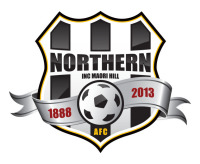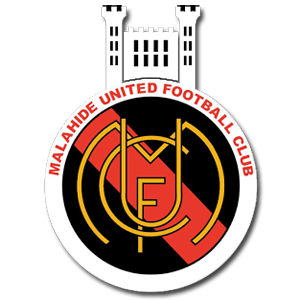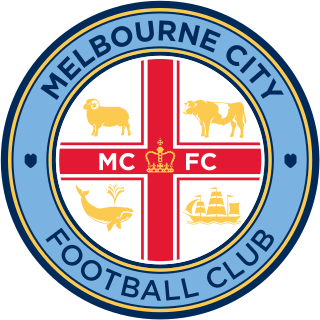
Newcastle United Football Club is a professional association football club based in Newcastle upon Tyne, Tyne and Wear, England. The team compete in the Premier League, the first level of the English football league system, as of the 2023–24 season. Since the formation of the club in 1892, when Newcastle East End absorbed the assets of Newcastle West End to become Newcastle United, the club has played its home matches at St James' Park. Located in the centre of Newcastle, it currently has a capacity of 52,305.

Sunderland Association Football Club is an English professional football club based in the city of Sunderland, Tyne and Wear. The team compete in the Championship, the second level of the English football league system.

Lincoln City Football Club is a professional association football club based in the city of Lincoln, Lincolnshire, England. The team competes in EFL League One, the third level of the English football league system.

Dunfermline Athletic Football Club is a Scottish professional football club based in the city of Dunfermline, Fife. Founded in 1885, the club currently compete in the Scottish Championship after winning the 2022–23 Scottish League One title. Dunfermline play at East End Park, are nicknamed The Pars and are currently managed by James McPake.
Middlesbrough Ironopolis Football Club was a football club based in Middlesbrough, England.

Newcastle United Jets Football Club, commonly known as Newcastle Jets, is an Australian professional soccer club based in Newcastle, New South Wales. It competes in the country's premier competition, the A-League, under licence from the Australian Professional Leagues (APL),. The club was formed in 2000 when it joined the National Soccer League (NSL) and was one of only three former NSL clubs to join in the formation of the A-League.

Tom Watson was an English football manager who managed Sunderland and Liverpool around the turn of the 20th century. In winning the league title with both clubs—the first title for both—he was the first manager to do so with two clubs. Watson remains Liverpool's longest-serving manager, spending a total of nineteen years at the Merseyside club.

Founded in 1888 Northern AFC is the oldest continually operating football club in the Southern Hemisphere.

Heaton is a district and suburb in the city of Newcastle upon Tyne, England, two miles east of the city centre. It is bordered by the neighbouring areas of Walkergate to the east, Jesmond to the north west, Byker to the south, and Sandyford to the west. The name Heaton means high town, referring to the area "being situated on hills above the Ouseburn, a tributary of the River Tyne." The area is divided into South Heaton, and High Heaton, representing the north, respectively. For city council elections, the area is split between three wards: Heaton, Manor Park and Ouseburn.

The Tyne–Wear derby, also known as the Wear–Tyne derby or the North East derby, is a local derby between the association football clubs Sunderland and Newcastle United. The derby is an inter-city rivalry in North East England with the two cities of Sunderland and Newcastle upon Tyne just 12 miles (19 km) apart. Sunderland play their home matches at the Stadium of Light whilst Newcastle play their home matches at St. James’ Park. The first meeting of the two sides took place in 1883, with the first competitive fixture being an FA Cup tie in 1888 which Sunderland won 2–0 over Newcastle East End.
Newcastle West End Football Club was an English football club which briefly played in the Northern League and the FA Cup in the late 19th century. Their entire history was played out during the Victorian era in Newcastle.

FC Halifax Town is a professional association football club based in Halifax, West Yorkshire, England. They currently compete in the National League, the fifth level of English football league system, as of the 2023–24 season.

Malahide United F.C. are a football club from Malahide, Fingal county in Ireland. The club plays at Gannon Park. Malahide compete in the Leinster Senior League.
The 1892–93 season was the first season in the history of Newcastle United after the merger of Newcastle East End and Newcastle West End. The club started the season as Newcastle East End, taking the name Newcastle United during December. They participated in the Northern League, the only season they have not competed in The Football League, finishing in second place behind Middlesbrough Ironopolis. They also competed in the FA Cup, but lost in the first round to Middlesbrough.
John Smith was a Scottish footballer who played as an inside right.
The 1891–92 season was the third in existence for Sheffield United. This was their first season playing in the recently formed Northern League as the club sought to establish itself as a major footballing force. The Blades had a reasonably successful season, finishing third in the league, and registering some comprehensive victories along the way. They improved on the previous season by reaching the second round proper of the FA Cup and were victorious in the local cup competitions, winning both the Sheffield Challenge Cup and the Wharncliffe Charity Cup for the first time.
The 1892–93 season was the fourth in existence for Sheffield United. This was their first season playing in the recently formed Football League Second Division as the club sought to establish itself as a major footballing force. With some members of the football committee unconvinced of the long-term future of the Football League, the club also retained its membership of the Northern League.

Melbourne City Football Club is an Australian professional soccer club based in the south–eastern Melbourne suburb of Cranbourne East but playing matches in Melbourne CBD, that competes in A-League, the highest division of soccer in Australia, under licence from Australian Professional Leagues (APL).

Hashtag United Football Club is a semi-professional football club based in Essex, England. They are currently members of the Isthmian League Premier Division and play at the Len Salmon Stadium in Pitsea.
Blue House Field was a football ground in the Hendon area of Sunderland, England. It was the original home of Sunderland A.F.C hosting the club between 1880 and 1881. It hosted rivals Sunderland Albion F.C. between 1888 and 1892. While the home of Sunderland Albion, Blue House Field hosted matches in the Football Alliance and the FA Cup.













